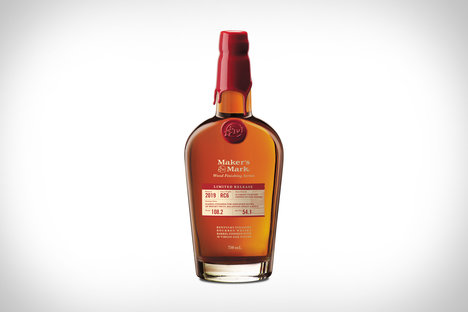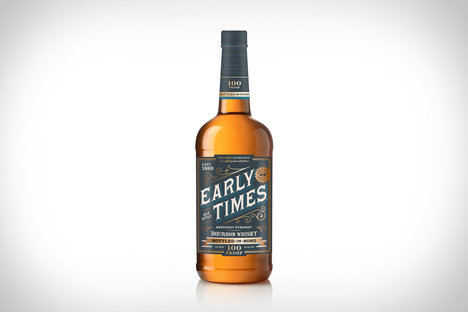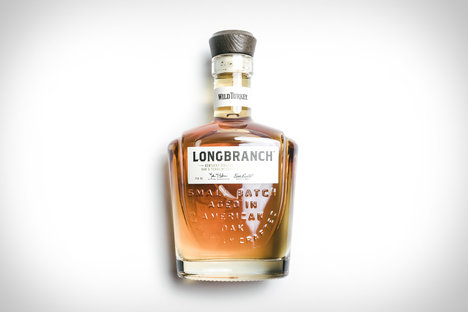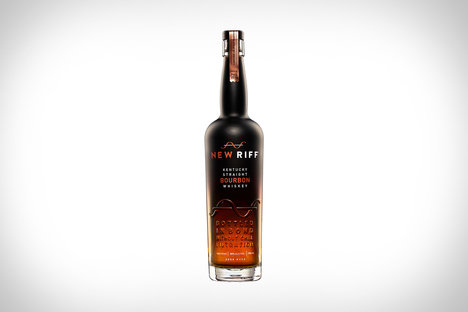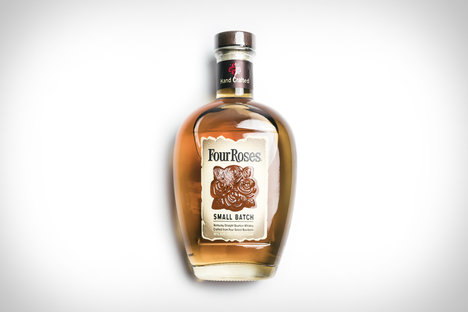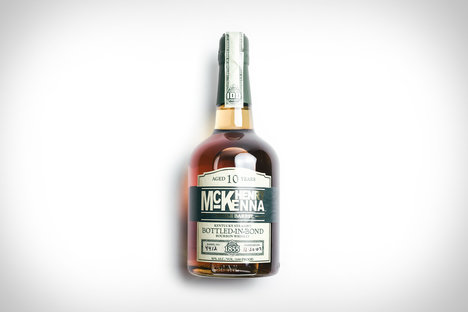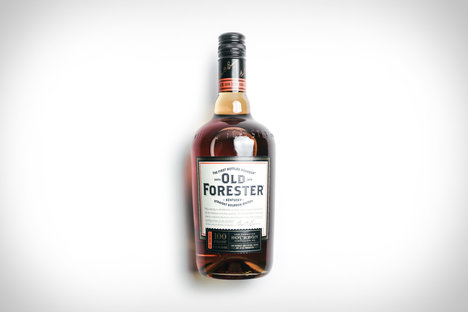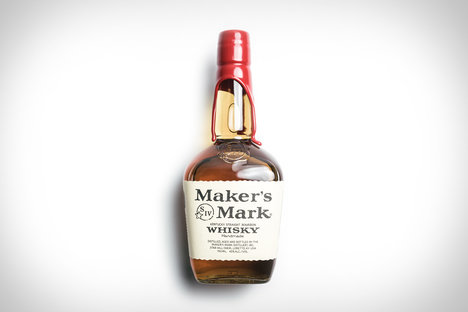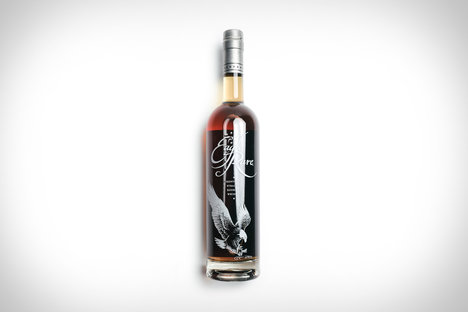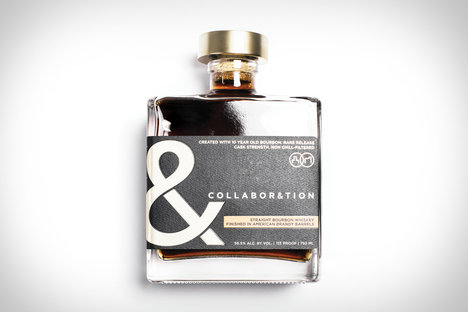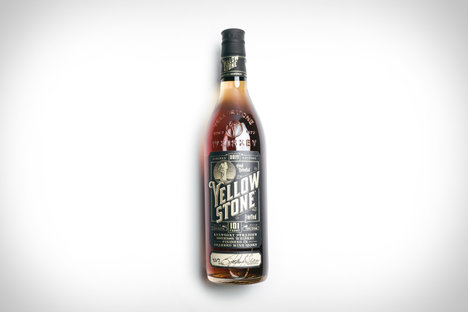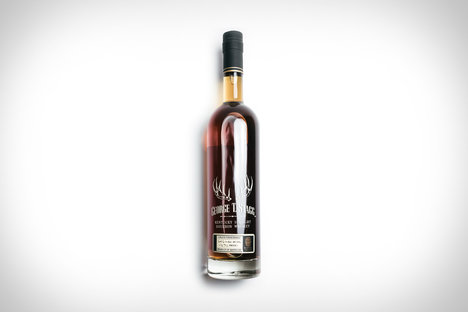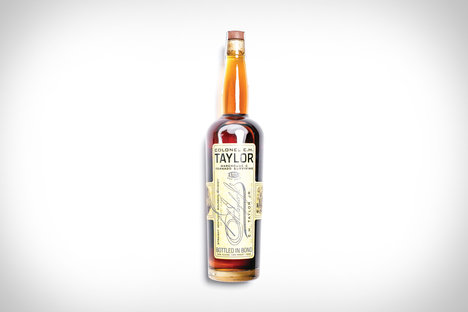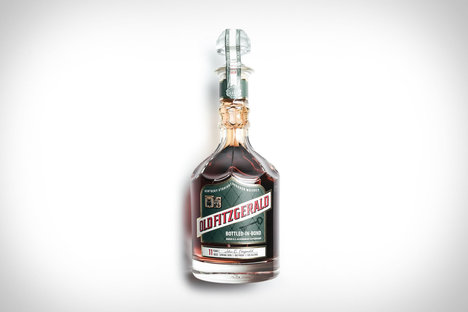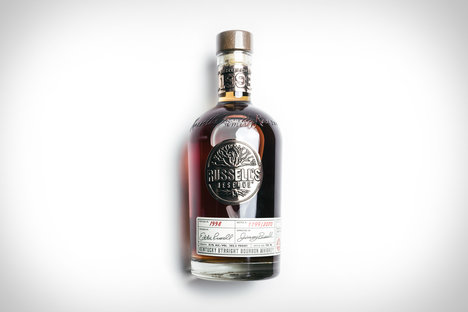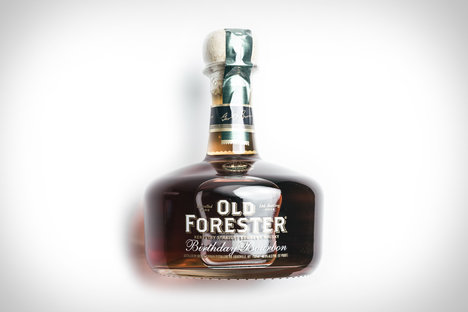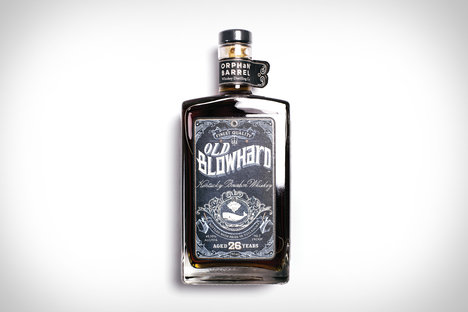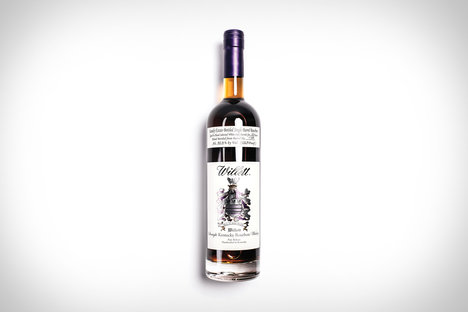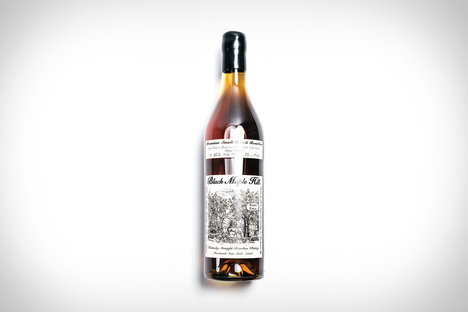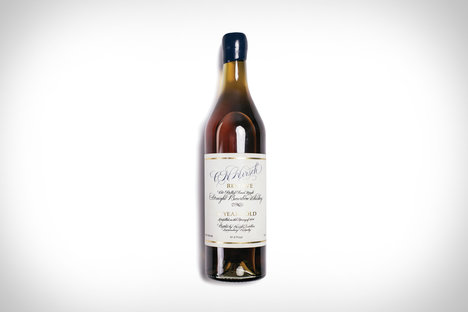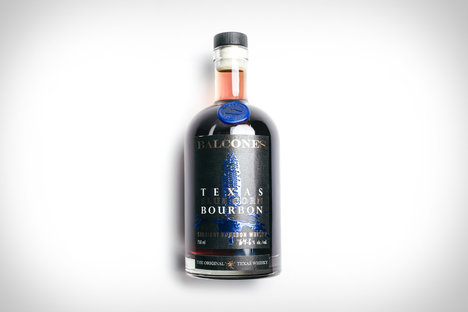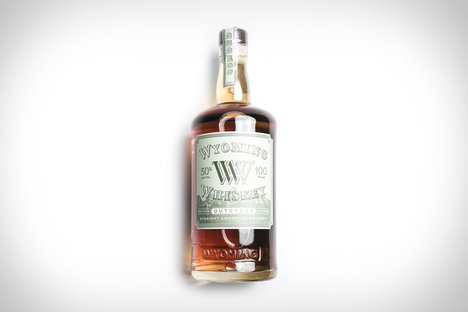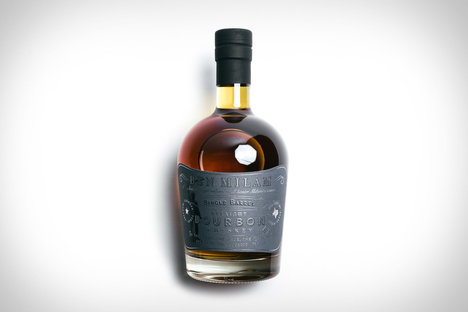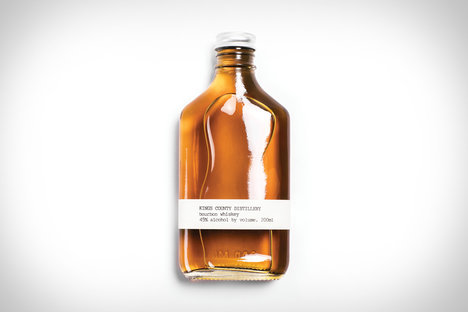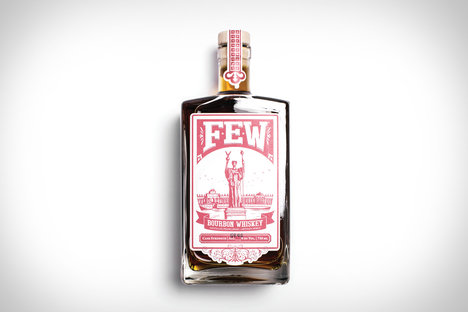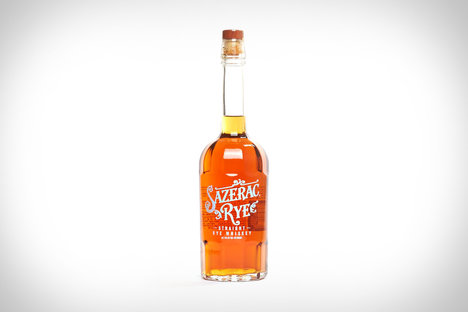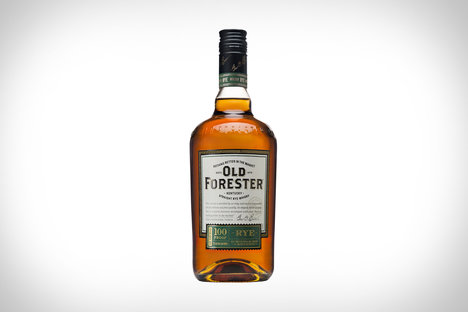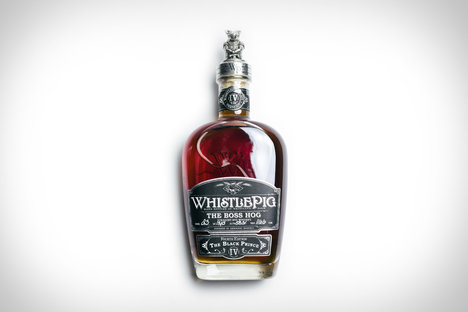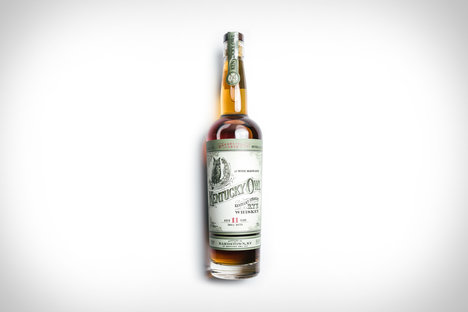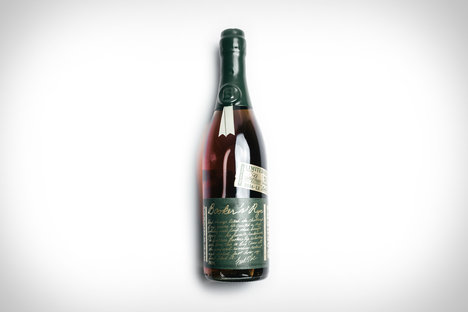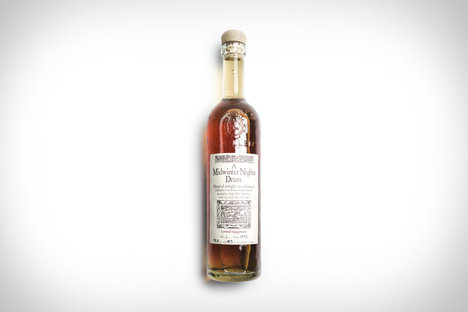The Best Bourbon Known To Man
In 1964, Congress declared bourbon the only native spirit of the United States. But in the past decade, the bourbon industry has exploded. While distillers have done their best to keep up with demand and keep the release calendar full, it's become more difficult to make sense of what's worth drinking. We've sampled bourbons new and old, from every brand in Kentucky, along with the craft upstarts from outside the Bluegrass state. We've visited every distillery, chosen single barrels, and spoken with several Master Distillers — from the industry's senior statesman Jimmy Russell to more recently elevated blending guru Brent Elliot at Four Roses. And now, we're finally ready to recommend the best bourbons in existence.
Last Updated on February 26, 2020.
Best Everyday Bourbon
If you like to have a pour on more than just special occasions, it's safe to assume what you reach for is a little more modest than an allocated bottle that cost hundreds of dollars. The following bourbons are some of the best you can buy without breaking your budget or your patience trying to track them down.
-
Best Limited Single Barrel Bourbon
Maker's Mark RC6 Bourbon
A wheated bourbon staple for decades, this special single barrel release marks the first for Maker's to hit shelves around the country. The bourbon is finished with 10 distinct wood staves and crafted to feature more pronounced flavors than the Maker's we all know and love. The bourbon is named for the RC6 stave profile used in the finishing process and has quickly risen above the class of single barrel releases to one of the best expressions of Maker's Mark ever produced.
-
Best Bottom Shelf Bourbon
Early Times Bottled In Bond Bourbon
The Early Times brand dates back to 1860, but a recent expression of the whiskey left a lot to be desired. That is, until this release. The legacy expression pays homage to an Early Times Bottled-In-Bond from 75 years ago and is a true old-style bourbon that honors the high standards of bourbon making the U.S. Bottled-in-Bond Act set forth. The classic profile is only available in six states but is one of the best values currently available and even more attractive in one-liter bottles.
-
Most Unique Filtering Process
Wild Turkey Longbranch Bourbon
Tapping into the roots of Wild Turkey creative director Matthew McConaughey, Longbranch bourbon goes through a process to filter it through Texas Mesquite and oak charcoals to refine and mellow the taste. It's also the first Wild Turkey product with the signature of someone other than Master Distillers Jimmy and Eddie Russell.
-
Best Craft Bottled-In-Bond Bourbon
New Riff Bottled-In-Bond Bourbon
Independent and family-owned, Kentucky's newest distillery is aiming to create a "New Riff on an old tradition." The distillery is based in Newport, Kentucky just south of Cincinnati and released their first bourbon this summer. The inaugural release is a high-rye recipe that is aged four years in 53-gallon toasted and charred new oak barrels and bottled-in-bond without chill-filtration at 100 proof.
-
Best Small Batch Bourbon
Four Roses Small Batch Bourbon
It's tough to find a small batch product that is as consistently delicious as the one Four Roses makes. The bourbon is a precise blend of four of their ten proprietary recipes with nothing younger than 6-year-old bourbon in the mix. Each batch is bottled at 90 proof and is a reliable standby that's easy to reach for on a daily basis.
-
Best Single Barrel Bourbon
Henry McKenna Single Barrel Bourbon
Named for an Irish immigrant who played a significant role in the rise of whiskey making in Kentucky, this bourbon won't stay under the radar for long. Henry McKenna is not only 10-years-old but is also a single barrel product and is Bottled-In-Bond. It's rich with vanilla, caramel, and oak flavors due to the extra time maturing.
-
Best Underrated Bourbon
Old Forester Signature Bourbon
The only bourbon made continuously before, during, and after Prohibition, Old Forester is named after one of the most respected doctors in Louisville during a period when bourbon was medicinally prescribed. This 100-proof expression is a representation of that history and is just as useful neat as it is in your favorite bourbon cocktail.
-
Best Bourbon To Drink Neat
Maker's Mark Bourbon
It might not be the first bourbon to use wheat instead of rye in their recipe, but you'd be hard-pressed to find a better everyday drinker in the wheated realm than Maker's Mark. Known for their distinctive dipped red wax seal, the addition of red winter wheat softens and sweetens the finished product making it an ideal change-of-pace choice.
-
Best Bang For Your Buck Bourbon
Eagle Rare Bourbon
Introduced by Bourbon Hall of Famer Charles L. Beam, Eagle Rare's value continues to soar while its price remains reasonable. It's produced by Buffalo Trace, is aged for 10 years and became a single barrel offering in 2005. It's currently a blend but is still one of the most balanced bourbons you'll find at any price, and is more than worthy of a regular spot on your home bar.
-
Best Barrel Finished Bourbon
Collaboration Bourbon
The right barrel finish can dramatically impact the taste of an already delicious bourbon. That's the case with this bottle from Bardstown Bourbon and Copper & Kings. The 10-year-old bourbon was carefully chosen, spent 18 months in a C&K Brandy barrel, and was bottled at a cask-strength 113 proof.
-
Best Bourbon Brand Renewal
Yellowstone Limited Edition Bourbon
The current owners of the Limestone Branch Distillery can trace their lineage back to Jim Beam himself. This release is the first that uses their own whiskey along with an original Beam family recipe that includes some original yeast from 1885. The bourbon is finished in double-seasoned charred wine casks and bottled at 101 proof.
Best Hard-To-Find Bourbon
The supply doesn't meet the demand for many bourbon releases, and nowadays that trend goes far beyond the Pappy Van Winkle line. If you're ready to dip your toes into the world of the bourbon secondary market and willing to pay more (sometimes much more) than retail prices, here are a few bottles you should prioritize.
-
Best Barrel-Strength Bourbon
George T. Stagg Bourbon
George T. Stagg helped build one of the most powerful distilleries of the 19th century. To honor his influence, one of the best bourbons in the world bears his name. Part of the annually released Buffalo Trace Antique Collection, Stagg is aged for at least 15 years and is bottled uncut and unfiltered at a proof that has at times risen above 140.
-
Best Re-Discovered Bourbon
Orphan Barrel Rhetoric 24-Year-Old Bourbon
Distilled in the early 1990's at the Bernheim Distillery, the barrels that make up the Rhetoric line were found in the old Stitzel-Weller Warehouses. The fifth release of this stock spent 24 years aging before it was found and bottled it at Orphan Barrel headquarters in Tennessee and is the most complex Rhetoric expression to date.
-
Best Bourbon Story
E.H. Taylor Tornado Surviving Bourbon
A tornado hit Buffalo Trace's Warehouse C in 2006. The walls and roof were damaged, but the barrels were too stubborn to budge. During repairs, they sat out in the Kentucky sun, causing extra evaporation and wood interaction for a rich concentration of flavor. Less than 100 of the barrels were chosen for this batch.
-
Best Vintage Bottle Design
Old Fitzgerald Bottled-in-Bond Bourbon
Heaven Hill is releasing a series of bonded bourbons every spring and fall for the next five years, and this 11-year-old Old Fitzgerald is the first on the schedule. The bottle was inspired by an original 1950's Old Fitz diamond decanter and includes a throwback tax stamp with distillation and bottling dates.
-
Best Bourbon Tribute
Four Roses 50th Anniversary Bourbon
Released to celebrate Al Young's 50th year with Four Roses, this blend includes four of their proprietary 10 recipes - the oldest of which is a 23-year-old bourbon made during Young's time as Distillery Manager. The bottle design is a tribute as well, inspired by a label from 1967, the year Young started his career.
-
Best Bourbon Investment
Russell's Reserve 1998 Bourbon
This bourbon was initially set aside in 1998 for the retirement of Wild Turkey's esteemed Master Distiller Jimmy Russell. Jimmy never decided to hang it up, but this bourbon was still bottled in 2015 and is one of the best things the historic distillery has ever made. Only 2,000 bottles were released, making this a fantastic investment.
-
Best Annual Bourbon
Old Forester Birthday Bourbon
Released each fall, Old Forester Birthday Bourbon pays homage to the brand's founder George Garvin Brown. It's housed in a unique old-fashioned bottle with an oversized cork and a different color ribbon to denote the vintage. It varies a bit from year to year, but each one is an instant collector's item.
-
Best Bourbon Bottle Design
Orphan Barrel Old Blowhard Bourbon
The Orphan Barrel series discovers and bottles lost barrels of bourbon from historic distillers. Each release features hand-drawn labels with animals that help describe the spirit of the name and whiskey. Old Blowhard is the oldest of the bunch, produced at the famed Stitzel-Weller Distillery and aged for 26 years.
Best Bourbon Grails
There are tough to find collectible bourbons that are re-released annually, and then there are the bourbon grails that will never be made again. The following are part of that legendary group, and the few that still exist unopened are in a class all by themselves.
-
Most Complex Bourbon
Willett Family Estate C12B Bourbon
Willett Family Estate bourbons represent the family's private barrel selection program and are some of the most sought-after bottles in the world. The "C12B" is one of the standouts, made using a sweet wheat mash bill. It was aged for 22 years, weighs in at 135.8 proof, and is one of only 106 bottles in existence.
-
Best Dusty Bourbon
Wild Turkey 101
When the Wild Turkey brand was young, most bourbons were Bottled-In-Bond at exactly 100 proof. To help make a name for themselves, the distillers added 0.5% ABV and the iconic Wild Turkey 101 was born. The 1970s were some of the brand's best offerings, promising a taste of history if you're lucky enough to find some.
-
Best Bourbon Collector's Item
Very Very Old Fitzgerald Bourbon
Bourbon isn't made like this anymore. Distilled by Pappy Van Winkle himself at Stitzel-Weller in 1956 and bottled after his death in 1968, this 12-year-old bourbon is in a class of its own. This Very, Very Old Fitzgerald is Bottled-In-Bond at 100 proof and comes packaged in this eye-catching "gold vein" bottle.
-
Most Sought-After Bourbon
Pappy Van Winkle 23 Year-Old-Bourbon
The entire Van Winkle line of bourbons are some of the most difficult to obtain, but the 23-year-old expression is the crown jewel. The best barrels of 20-year-old are left to sleep in the wood for an extra three years before bottling at 95.6 proof, adding even more complexity to the best wheated bourbon on Earth.
-
Hardest Bourbon To Find
Black Maple Hill Small Batch Bourbon
It might not have the notoriety of Pappy Van Winkle, but this release is even more exclusive. Bottled in the early 2000s, this sought-after bottle contains wheated bourbon from Stitzel-Weller Distillery bottled by Julian Van Winkle III himself. Aged for 16 years, it can now only be found in well-curated collections.
-
Best Bourbon From A Shuttered Distillery
A.H. Hirsch 16-Year-Old Bourbon
In 1989 the Mitchter's Distillery in Pennsylvania shut its doors after operating since 1753. This bottle is one of the few from the famous distillery to survive. The "blue wax" release was the first bottling of Hirsch Reserve, distilled in 1974 and aged for 16 years. A piece of bourbon history that will never appear again.
Best Bourbon Made Outside Of Kentucky
Even though over 95% of the bourbon on store shelves today is made in Kentucky, there are several areas of the country making some promising stuff. These bourbons might not be getting the credit they deserve yet but are on their way to standing alongside some of the household names with pride.
-
Most Unique Bourbon Recipe
Balcones Texas Blue Corn Bourbon
It's not easy to get the attention of Kentucky-loyal bourbon drinkers, but this beast from Balcones in Texas is turning heads. Corn is the dominant grain in bourbon, and the Waco based distillers use blue corn in the mash bill that is native to the Lone Star State. It's the recipient of a slew of awards, and clocks in at a commanding 129 proof.
-
Best Bourbon From A Craft Distiller
Wyoming Whiskey Outryder Bourbon
A high-rye bourbon blended with a traditional bourbon recipe make up the mash bill for Wyoming's Outryder. The bourbon not only shows off the craft distiller's blending skills but pushes them to the top of the list for non-Kentucky bourbons. It's bottled-in-bond, and all grains used are non-GMO and grown in Wyoming.
-
Best Bourbon Secret
Ben Milam Single Barrel Bourbon
Located in the Texas Hill Country, Ben Milam Whiskey produces three spirits, and their Single Barrel Bourbon has quickly become their flagship. That's in large part due to their win at the San Francisco Spirits Competition, where they took home the event's highest prize for the second straight year.
-
Best Home Grown Bourbon Mash Bill
Kings County Bourbon
The first operating distillery in New York since Prohibition, Kings County uses organic corn grown on a small plot outside their building to create this bourbon. It's then distilled in imported Scottish copper stills and aged for at least two years before being bottled in these clear, flat fifth bottles with minimal labeling.
-
Best Craft Distiller Bottle Design
Koval Bourbon
Koval is Chicago's first distillery since the mid-1800s. Their single barrel bourbon is the centerpiece of the line and substitutes a gluten-free grain called millet in the place of traditional ingredients like rye and wheat. It's organic, unfiltered, and an excellent example of the growing craft spirits movement in the United States.
-
Best Barrel-Strength Bourbon From A Craft Distiller
Few Cask Strength Bourbon
Dry until 1972, Evanston, Illinois is now the home of craft distiller Few Spirits. Among their collection is this Cask Strength Bourbon, made by hand using a high-rye mash bill and aged in custom-made barrels from Minnesota. It's bottled at 117 proof with a label design inspired by the Chicago World's Fair of 1892.
Best Rye Whiskey
If you take the corn in a bourbon mash bill and bring it under 51% while upping the rye to the dominant grain, you get Rye Whiskey. The recipe swap raises the level of spice and takes the sweetness down a notch. Rye was the dominant American spirit all the way up until Prohibition, and is in the midst of a big comeback in the past decade spurred by the craft cocktail culture and continued with excellent releases like these.
-
Best Rye Whiskey For Cocktails
Sazerac Rye Whiskey
If there's one rye that embodies the history of New Orleans it's Sazerac Rye Whiskey. The spirit dates back centuries, and this particular expression was named after the Sazerac Coffee House on Royal Street where visitors drank cocktails made with rye and Peychaud's Bitters. That drink was later named the "Sazerac" and was America's first official cocktail.
-
Best Bang For Your Buck Rye Whiskey
Old Forester Rye Whiskey
Nearly 150 years after Old Forester got its start, the famous bourbon brand released their first rye whiskey. The spirit uses a historic recipe that was acquired by the brand in 1940 which benefits from a large amount of barley for full natural fermentation and enough malt to add a floral spark to each pour and balance out the spice of the rye grain. It's bottled at 100 proof and is already one of the best rye whiskeys you'll find on store shelves.
-
Best Rye Whiskey Nickname
WhistlePig The Boss Hog IV Rye Whiskey
Based in Vermont, WhistlePig produces some of the most ambitious rye whiskey releases in the country. Their Boss Hog series are the boldest batches, and the fourth edition, dubbed "The Black Prince" is the reigning champion. The rye was aged for 14 years before being finished in French Armagnac barrels and then bottled at 124 proof.
-
Best Small Batch Rye Whiskey
Kentucky Owl Rye Whiskey
The Kentucky Owl brand was born all the way back in 1879 and brought back to life in 2014. Since then, they've released seven batches of award-winning bourbon. To follow up on that success, Kentucky Owl unveiled this rye whiskey, a fitting extension of their line that spent 11 years aging before being blended and bottled at 110.6 proof.
-
Best Barrel-Strength Rye Whiskey
Booker's Rye Whiskey
Named for the late Jim Beam Master Distiller Booker Noe, this rye is made from some of the last barrels he laid down before his death. His son Fred, the current Master Distiller, selected some of the best from the 13-year-old batch and bottled them at 136 proof and it's already known as one of the best barrel-proof rye whiskeys on earth.
-
Best Barrel Finished Rye Whiskey
A Midwinter Night's Dram Whiskey
High West Distillery has a talent for blending and finishing rye whiskey. One of their most coveted releases is A Midwinter Nights Dram, which takes their Rendevous Rye and finishes the whiskey in port and French oak barrels. Named with Shakespeare in mind, all the way down to the Act and Scene designations to mark each batch.



